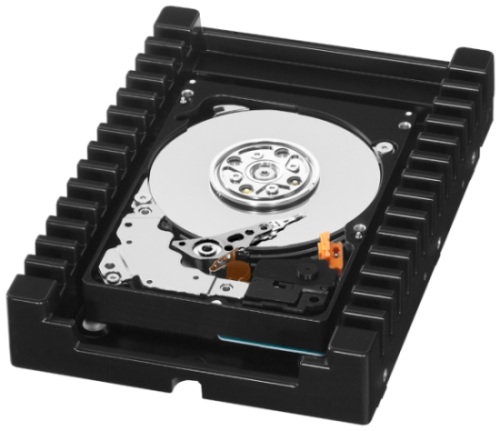It’s like Christmas morning for PC enthusiasts today. Western Digital has released its SATA 3.0 (that’s a maximum transfer rate of 6.0 Gb/s, which translates to 768 MB/s) Velociraptor hard drives. The Velociraptor name basically means “OMG FAST!” when it comes to hard drives. The thing is, unlike the last time Western Digital released Velociraptor hard drives, two years ago, solid state drives are on the market, and they’re clearly faster than even the fastest traditional hard drive. Doesn’t matter: if you’re looking for absolute, top-of-the-line performance when it comes to traditional hard drives, it looks like these new Velociraptors are the way to go.
You will, of course, need a fancy new motherboard to fully take advantage of the new drives. These motherboards aren’t exactly cheap: ASUS’ current top dog, the P6X58D Premium, goes for $309 on Newegg. You really do have to weigh whether or not it’s worth that kind of money to “future-proof” yourself (the motherboard also supports USB 3.0). I lean toward yes, if only because I like the idea of dropping fat cash on PC components.
Some people build and maintain cars. Others build and maintain PCs!
Right, so the drive! In the words of TomsHardware, “Once again, a hard drive carrying the Raptor name claims the crown for being the fastest desktop hard drive available.” You’re looking at 17 percent faster gaming performance (compared to the next fastest hard drive), 27 percent application loading, and so on. You’re encouraged to read the actual benchmarks—that’s why they’re there!
Now, let’s talk value. Western Digital wants $329 for the 600GB version. You can grab a 2TB (!) Western Digital Caviar Black for $279. (I have a 1TB Caviar Black in my PC right now.) Are you willing to pay a little bit more for a significantly smaller drive, but one that’s quite a bit faster? That’s your call.
Then it gets even crazier when you consider SSDs, though those are still on the expensive side at capacities of more than a few gigabytes.
I think the conclusion here is, yeah, these new Velociraptor drives are the bee’s knees. There are cheaper alternatives out there, but they’re not as fast. There are more expensive alternatives out there, but they’re faster, at least theoretically.
But let’s face it: if you’re the kind of person who buys $300+ motherboards then you can probably afford a hard drive like this. Heck, you can probably afford SSDs, too, so why not use ’em both: install Windows on a super-fast SSD, then leave “everything else” on these new Velociraptor.
Or just look at the benchmarks and sigh, like me.
